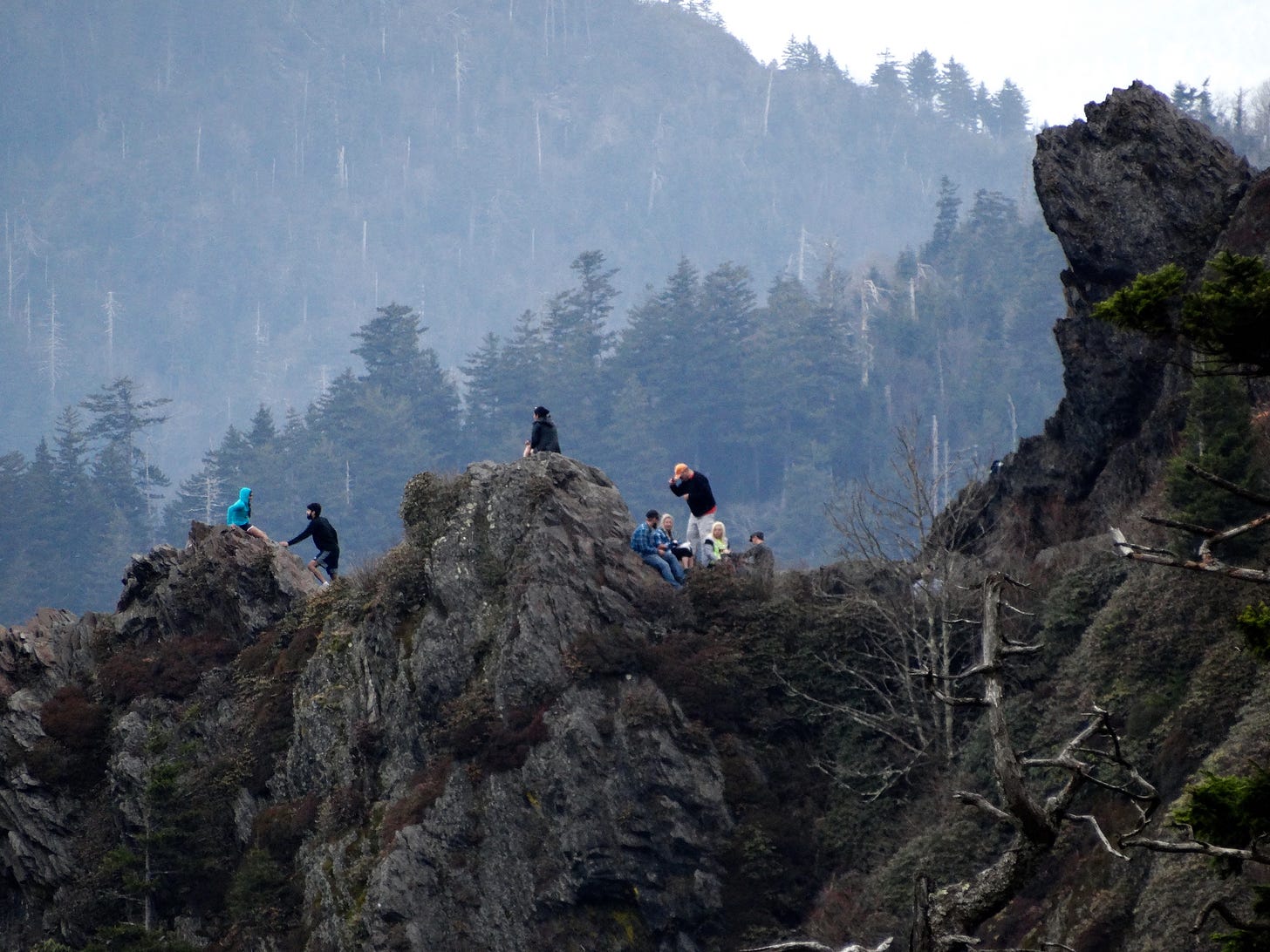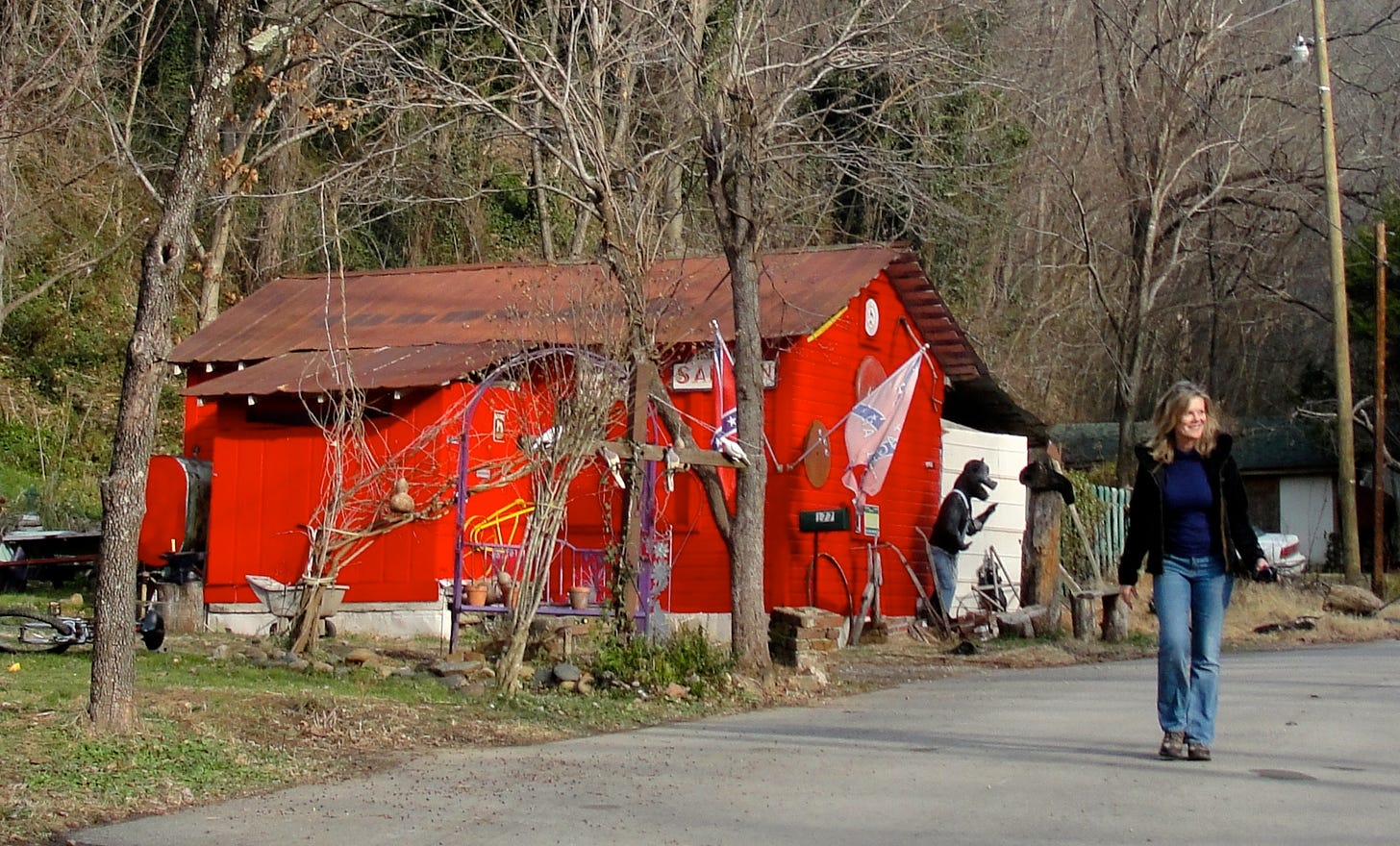One year for Christmas, I ordered a t-shirt for Leif from Slightly Stoopid, a California rock band. Inspired by Mötley Crüe, Guns N’ Roses, Metallica, and Def Leppard, Slightly Stoopid describes their music as "a fusion of folk, rock, reggae and blues with hip-hop, funk, metal and punk."
At the time, Slightly Stoopid was one of his favorite bands. I liked their music, too. "Girl U So Fine," released in August 2007, was one of my favorite songs ever. I loved the guitar work by Miles Doughty and Kyle McDonald.
When the t-shirt arrived, however, I felt slightly stoopid myself realizing I’d inadvertently ordered a child’s size. Luckily, there were still a few weeks left before Christmas, and I had an idea.
Just down the road that connected the downtown area to my neighborhood by the lake, there was a little business in a little building over a little wine shop that was called Mary’s Magic. After a steep climb up the long flight of stairs on the left of the building, you entered into a warren of rickety old rooms housing Mary herself, and the seamstresses she employed “from the counties” – mountain women who liked to sew and gossip with one another with pauses for a cigarette in between projects.
Still needing one last gift for Leif, I brought the black t-shirt to Mary to see if she could make it into a pillow. She took it into her hands, turned it over and over, then laughed and said, well sure, why not.
With her graying hair and kind dark eyes behind her glasses, I don’t know how old Mary was; she’d reached that age known vaguely as ‘ageless.’ What I did know, however, was that she was an excellent seamstress and full of piss and vinegar once she felt comfortable talking to you. Mary considered herself “mountain folk” and as an outsider, and a Northerner at that, it took her a while to warm up to me.
But once she saw I was a repeat customer, one who was genuinely interested in hearing her stories, if she wasn’t too busy, she would entertain me with a tale or two of mountain life and culture. I took to calling her “Magic Mary,” an affectionate inversion of her business name.
Fortunately, I’d arrived with my slightly stupid t-shirt-to-pillow project on a not very busy day, and so I took the opportunity to ask Magic Mary about something I’d overheard not long before.
“Have you ever heard an expression, “The mountains‘ll git ya?” I said, in my best imitation of a Southern accent. She looked surprised.
“Ho, yes!” she said laughing. (That’s not a typo. Around these parts, it’s not unusual to hear the word “oh” pronounced backwards. I think this is for emphasis.)
I told her I’d recently wandered into the outfitters store in Weaverville, not more than a few miles up the road. While there, I’d overheard a group of men man-gossiping about something somebody had done – clearly something they didn’t apparently approve of. While I couldn’t make out the exact nature of the crime from the other side of the displays of fishing and hunting gear I was hiding behind, I did hear the verdict:
“The mountains’ll git ’im!,” one man said, a statement that was received with a chorus of approving grunts from the others.
I was taken with the idea that the ancient mountains we lived in, some of the world’s oldest, could inflict justice or revenge upon those who deserved it and had made a mental note to ask Magic Mary about it. If anyone knew, she would.
“Is that really a thing?” I asked after we’d finished with the t-shirt details.
“Ho yes,” she said again, this time with a serious expression on her face. “The stories I could tell you!”
“Like what?” I asked, always up for good stories and already thinking what a cool idea this might be for a documentary.
“Well, I could tell you a lot of them!” she said. “Like the time I had a customer who brought me a whole bunch of clothes to alter, but then never came back to pick ’em up! And then, many months later, out of the blue, she finally stopped by. I asked her why it had taken her so long. And she told me her husband, who had a lot of money, had put in a contract to buy up someone’s family land for development.”
Here Mary paused for dramatic effect. Knowing the subject of outsiders coming in and buying up mountain folk’s lands, especially if they were unable to pay their taxes on it, was a touchy one, I leaned in to listen even more closely.
“And…?” I said, prompting her.
“He died on the morning they was supposed to close on the deal!” she said triumphantly. “He had a heart attack – jesht like that!”
She nodded her head for emphasis, satisfied with the justice the mountains had meted out. I was genuinely surprised, both by the story as well as her apparent glee in the outcome.
“Tell me another one!” I said, setting up film shoots and interviews in my mind.
Over the next twenty minutes or so, Mary unspooled a few more tales, enough to get me mentally drafting out a grant request for production funds, while hoping there wasn’t anything I myself was doing to upset the mountains I’d come to love. I envisioned the documentary as a cautionary tale for those who came to take advantage of the natural beauty of the Blue Ridge Mountains and try to profit from them.
Not long after that conversation, I saw a billboard along the I-26 highway on my way into Asheville. It was an advertisement for a 795-acre parcel of mountain land just east of the city that offered a golf course, designed by Tiger Woods, surrounded by a community of one thousand luxury homes. On the billboard, Woods appeared to gaze off in the distance at the mountains with the words “Come see what I see!” representing his thoughts.
That was in 2008.
And we all know what happened to him the following year: a high-profile marital scandal followed by the loss of millions of dollars in endorsement deals. By 2012, seven years after the project was announced and all the trees on the mountainside had been chopped down by the developers, fewer than 50 of the estimated 1000 homes had been sold, and the development project went into bankruptcy.
I don’t have any proof, but I like to think the mountains got ’em.
Kristin Fellows is a published writer, world traveler, and a well-seasoned documentary film consultant. When not writing, Kristin can often be found listening to someone’s story or behind the lens of one of her cameras.
More about Kristin @ kristinfellowswriter.com





